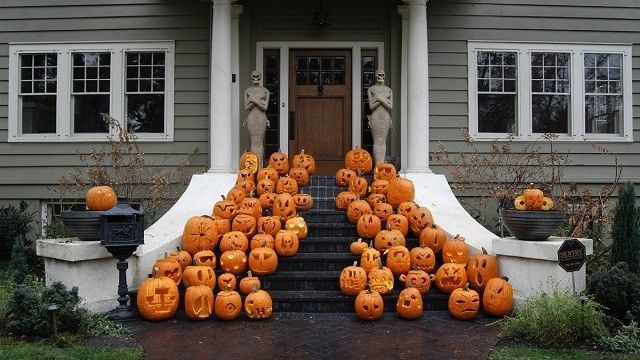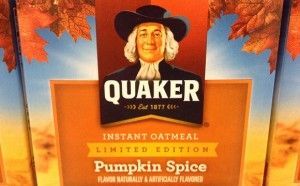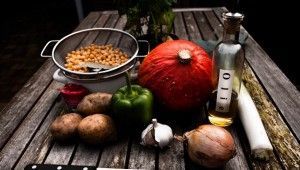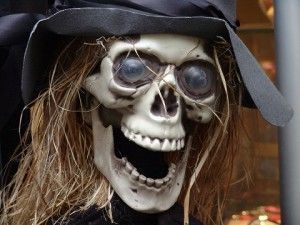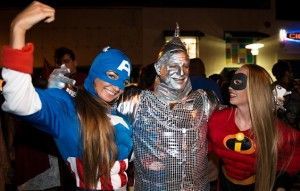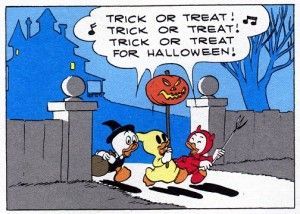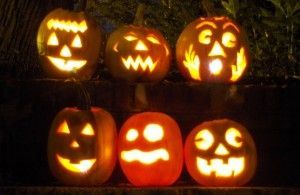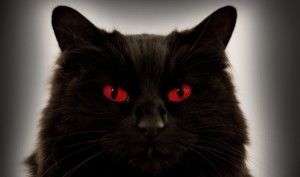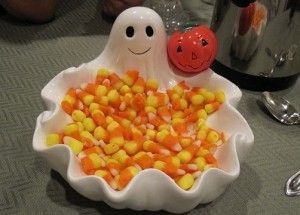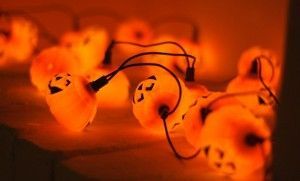Photo by Roadsidepictures / Flickr
By Kevin Matyi
Copy Editor
For many people, October means one thing: Halloween. It is the time to go to the store to buy decorations, maybe even get a costume or make one from stuff at home, discover that everything can indeed have pumpkin spice added to it and gorge yourself on more candy than you would reasonably think even possible for the rest of the year.
But where do these traditions come from? Why are we choosing to walk around at night alone or in small groups in order to ask people who live nearby for candy? Who decided that orange and black would be the colors signifying a holiday, and practically an entire month? How did Halloween even start?
Here are nine traditions of Halloween explained:
9. Pumpkin Spice
Photo from Mike Mozart / Flickr
Although a recent invention, pumpkin spice has become a staple of the fall season. In 2003, Starbucks saw that its previous seasonal drinks, peppermint mocha and eggnog latte, were successful, and so began experimenting with other flavors. Pumpkin spice was originally a middle of the road choice, but the developers saw that there was almost nothing pumpkin-flavored in the market. So they tinkered with the recipe until it became the flavor that we now know and see everywhere for part of the year.
8. Origins
Photo from Enric Matinez / Flickr
Halloween most likely began as a pagan harvest festival occurring on the Celtic New Year at the turn of summer to autumn, hence the festival’s original name, “Samhain,” or “summer’s end” in Gaelic.
7. Ghosts, Monsters and Magic
Photo from George Erws / Flickr
In modern times, we associate Halloween with every type of monster and magic imaginable. This started because of the belief that during Samhain, spirits and magical creatures could more easily enter our world and would be more active than normal.
6. Costumes
Photo from photo-gator / Flickr
Since ghosts and other creatures were more likely to be around during Samhain, people thought to take preventative measures against their mischief. One way was by donning the appearance of a monster to stop it from trying to take the human’s soul. In the U.S., dressing in costumes for Halloween became a widely accepted custom in the 1950s after the Irish immigrants brought the practice to the country in the 1900s.
5. Tick-or-Treating
Photo from Tom Simpson / Flickr
Surprisingly enough, trick-or-treating does not have roots in a Samhain belief that ghosts could take the guise of a human beggar, knock on peoples’ doors and curse the humans if they turned the ghost away empty-handed.
Instead, it is more likely that the tradition dates back to “souling,” a Christian tradition from the Middle Ages. Souling was the practice of the poor going house to house asking for food on Nov. 1, and offering it for prayers for the dead on all Saints Day, Nov. 2.
4. Pumpkin Carving
Photo from Joe Shabotnik / Flickr
Jack-O’-Lanterns originally served two purposes. First, they scared away evil spirits, protecting the house from monsters. The second reason is darker.
Folk lore says that a farmer— in some tales a blacksmith— Jack, managed to trap the devil, agreeing to let him go only if he promised to never take Jack’s soul. When Jack died, the devil could not take his soul to Hell, but he had lived too sinfully to be allowed into heaven.
The devil mockingly gave Jack a coal from Hell to help him see where to go. Jack carved out a turnip— originally, people carved turnips for Halloween, not pumpkins, and put the coal inside.
This led to the superstition that by putting Jack-O’-Lanterns out on Halloween night, people could help guide lost spirits home.
3. Animals
Photo from Chris Jones / Flickr
Cats, bats and spiders. Why have we associated them so strongly with Halloween? Part of the reason is that all of them were seen during the Dark Ages as witches’ familiars or demonic creatures.
Cats were the least harmful of the three, only being bad luck if you saw one, but otherwise being harmless.
Spiders were the most outright helpful. If one fell into a lamp and burned, it meant that witches were nearby. If you saw one, it meant that the spirit of a dead loved one was watching.
Bats had the most negative influence, ranging from meaning a bad omen if you saw one to someone dying in the house soon if it flew around the house three times to the house being haunted if it flew inside.
2. Candy Corn and Candy Apples
Photo from Momboleum / Flickr
Candy corn came in to being in the 1880s. Originally, it was made by hand with each syrup being heated and then poured into molds. It is also one of the healthiest candies, at 140 calories per handful.
Meanwhile, candy apples exist because the influence of Christian traditions. Samhain took place during the Roman festival for Pomona, the goddess of fruit and nut trees. Thus, the influence from the festival changed how the harvest was celebrated once Samhain was changed into Halloween.
1. Colors
Photo from Chris Neal / Flickr
Why orange and black? Sure, most of the festivities tend to take place at night, and we carve pumpkins. But is that the only reason?
The short answer is “no.” Those are at least partly consequences. The color tradition dates back to Samhain, long before people carved pumpkins for the holiday.
The orange comes from the color of the harvest crops and leaves at the time of the festival. The black comes from the death of summer as it turned into fall and signaled the coming winter.


